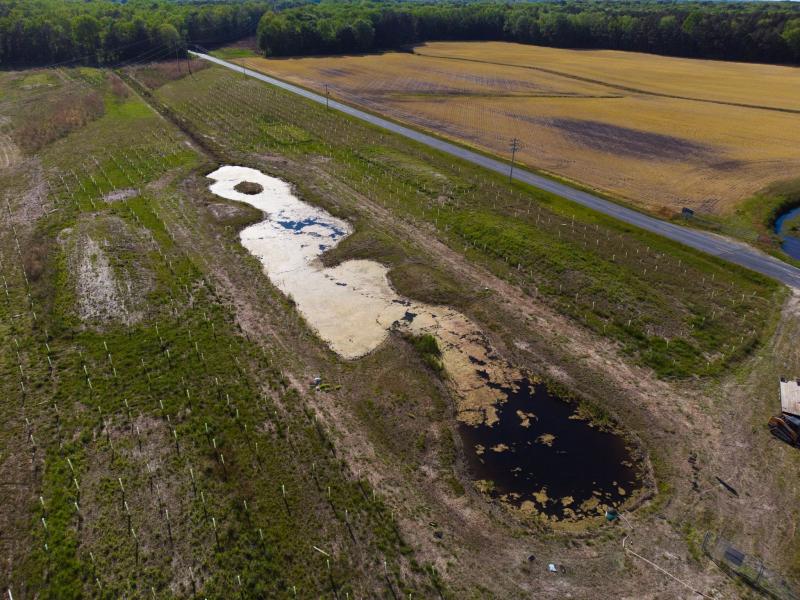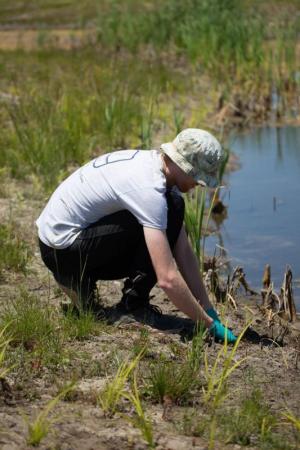A project to add native wetland vegetation that will restore natural habitat and improve water quality is taking root this month in Sussex County.
Environmental Concern Inc., a contractor based in Maryland, is completing the final plantings at an innovative restoration project along Burbage Road near Frankford, with some assistance from volunteers. The site includes two constructed freshwater wetlands that cover just under 2 acres, a nearly 2-acre native meadow habitat and about 7 acres of native hardwood forest on county-owned land.
The project is a cooperative effort among the Delaware Center for the Inland Bays, Sussex County government and the Sussex Conservation District. The property, which covers a total of 20 acres next to Blackwater Creek, a tributary of Little Assawoman Bay, will no longer be used as fertilized cropland.
“We are honored to work with the Center for the Inland Bays on the design and construction of the Burbage Road water-quality improvement project,” said David Baird, SCD district coordinator. “This project will provide an ideal habitat for native and migratory wildlife while improving the Inland Bays water quality by filtering nutrients and sediment.”
Sussex County, which owns the property and funded the effort, hopes to apply the restoration efforts to a stormwater credit program that is now under development.
“The county appreciates our continued relationship with the Center for the Inland Bays, and this project highlights the benefits of our partnership,” said Todd Lawson, county administrator. “By restoring the county’s property to its natural condition, these efforts will have exponential benefits to the water quality and health of the upper reaches of the Indian River and the Inlands Bays overall.”
As the vegetation takes root, the new habitats are expected to help fight climate change by capturing about 8.7 million pounds of atmospheric carbon over the next 20 years. The project also will stop about 170 pounds of nitrogen and four pounds of phosphorus pollution from reaching nearby waterways every year.
“We’re not just reforesting. We’re creating a more cohesive space for wildlife,” said Zachary Garmoe, the center’s science technician. “Right now, there are thousands of tiny trees in tubes that 10 years from now will be a forest that will also help improve water quality and sequester carbon from the atmosphere.”
To learn more about the center’s restoration work, go to inlandbays.org.

























































